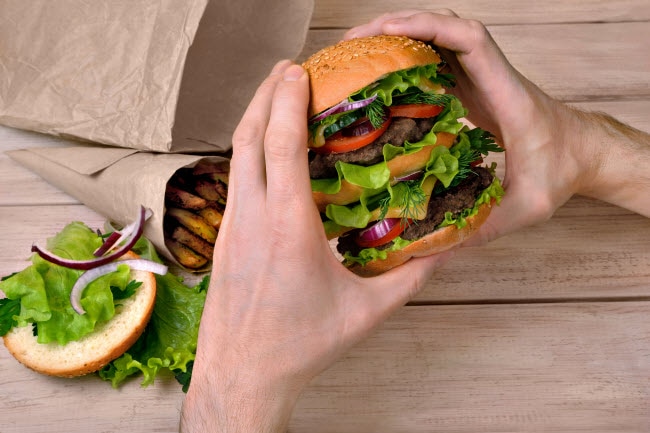If you can’t resist the lure of the “golden arches” or find yourself making a weekly “run for the border,” take heart: Today’s fast food often isn’t always as bad as you think.
“Fast food has changed over the years,” says Nancy Farrell Allen, a registered dietitian nutritionist and founder of Farrell Dietitian Services in Fredericksburg, Virginia.
Farrell – who is also a spokesperson for the Academy of Nutrition and Dietetics — says more healthful choices are now available. Salads, grilled chicken, and even fruit and yogurt give diners options to eat a little better.
However, plenty of fast food still falls into the category of high-fat, high-sodium, low-fiber fare. And that’s particularly dangerous in our busy world.
“We so willingly relinquish control of our food ingredients in favor of quick-serve, grab-and-go convenience,” Farrell says.
Why is fast food bad for you?
It is no secret that most fast food can be bad for your health. Menu items often are loaded with unhealthy fat, added sugar and excessive levels of sodium.
In addition, portion sizes have ballooned with the introduction of “deluxe,” “super” and “mega” menu options.
“We have lost touch with true serving sizes,” she says. “Bigger portions mean more calories, fat and sodium.”
Frequent fast-food consumption can raise your risk for developing health problems such as high blood pressure, diabetes and heart disease.
“The frequency of fast food consumption by some individuals may increase the risk of chronic diseases,” Farrell says. “This can wreak havoc with personal health goals.”
How to make fast food choices more healthful
If you are going to eat fast food, Farrell recommends thinking about your meal choices long before approaching the drive-thru or counter.
Commit to more healthful choices, and don’t let temptation throw you off track. She says it is particularly important to avoid ordering “value meals” and other promotions even if “the value sounds too good to pass up.”
“By saying yes, you have lost control of what you eat and relinquished it to others,” she says.
If you are visiting a fast-food restaurant with someone else, offer to split a meal. “When I order french fries, it is always a small size, and they are always shared with others,” Farrell says. “Really taste your food and learn to be satisfied with less.”
Avoiding sauces and condiments helps you cut back on added sugar and fat. Skip extras like milkshakes, onion rings and ice cream. Instead, consider bringing some veggies to add to your meal, or order a salad.
“Every lunch and supper should have 1 cup of veggies with it,” Farrell says. “Where are your veggies in your fast-food purchase?”
A better way to eat
Of course, avoiding fast food altogether is the best option for lowering serious health risks and keeping your waistline in check.
People often turn to fast food because they are busy or on the go. Farrell says putting a little more discipline into your meal planning can help reduce your dependence on fast food.
“Think ahead and plan your meals a bit more,” she says. “Slow down.”
Farrell recommends purchasing an insulated bag and packing small meals that you can eat on the go.
“Make sure your weekly shopping trip includes items that you can pack in a lunch and you have containers and Ziploc bags at home,” she says.
As for individual meals, Farrell suggests a breakfast with protein and fiber “so that you are not ravenous at lunch time.”
For lunch and supper, you should have:
- A small amount of protein — meat, nut butter, eggs, beans and a meat alternative – equivalent to about one-quarter of your plate.
- One-half to three-quarters of a cup of grain, preferably whole grain bread, wrap, pita, leftover rice, quinoa or pasta.
- 1 cup of vegetables
“Make sure you have these items in your refrigerator for easy grab-and-go options,” she says.

